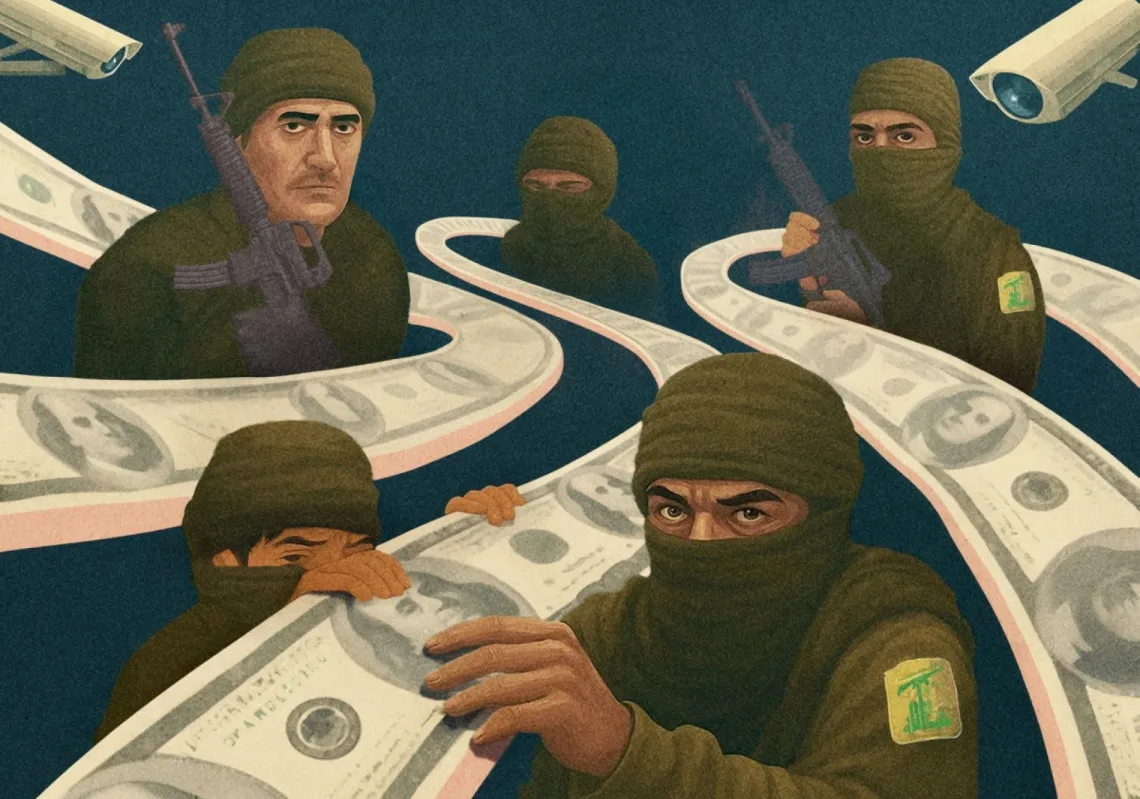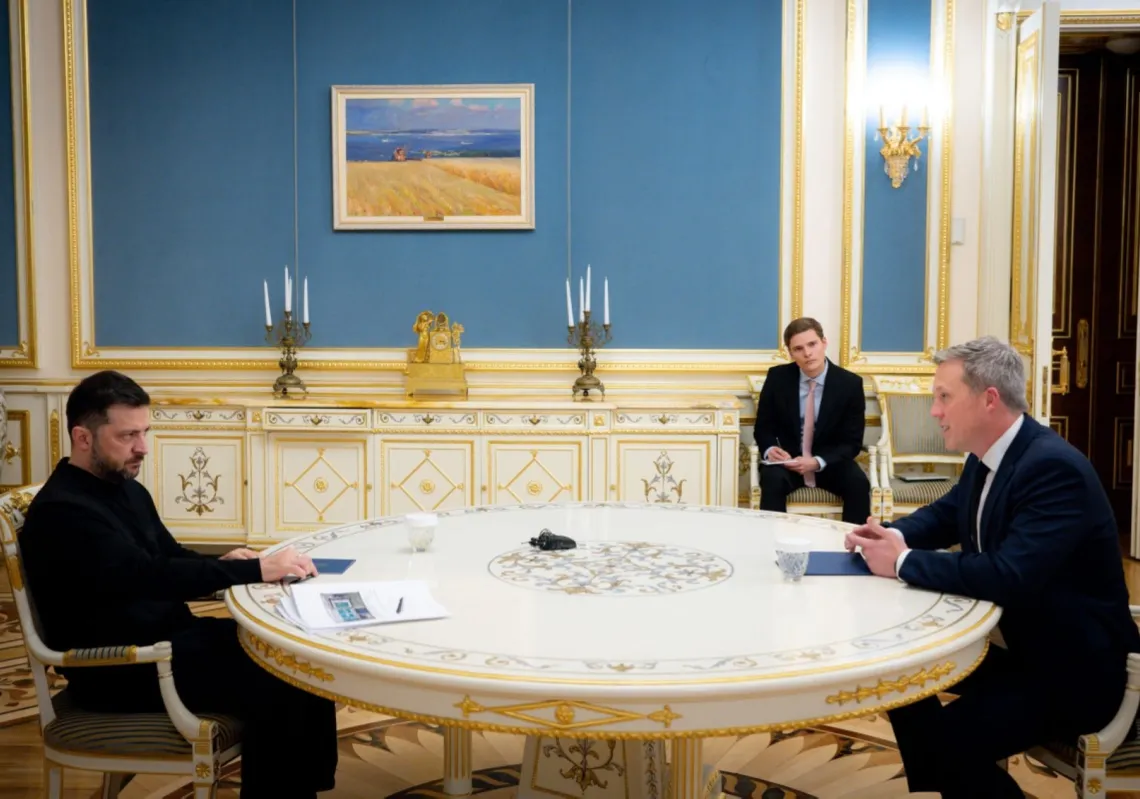Back in the Sixties, it took footage shot from the surface of the moon for the world to see itself as a single, isolated entity. People watched the Earth rise above the lunar horizon and saw for the first time what they had hitherto dimly perceived, that we were all on the same rotating ball, and that this ball was predominantly blue.
Because this was the Sixties and sex was still a new thing – according to the poet Philip Larkin, it had only been invented a few years before – John Lennon got very excited about those pictures. He declared that the roundness of the world turned him on. He also claimed that, because the sky was blue, it made him cry.
That was the Beatles for you, always emoting over one thing or another. As a species, we’ve long since been there, done that and got the wet T-shirt, but at the time the moon landing was a big thrill. If, as seems likely, the Earth reminded John of a human breast, we now know (more certainly than ever) that it is a lone breast. It was Melanie Klein who spoke about the ‘good’ breast and the ‘bad’ breast. If there is another Earth, this one’s twin, somewhere out there in the universe, it’s clear we will only ever get to inhabit this one, and it seems increasingly obvious we ended up with the bad ’un. This being the case, the existence or nonexistence of a good breast is somewhat academic. As Peter Cook once said, tragically I was an only twin. No matter how many exoplanets and alien civilisations there might be across the universe, they are all stubbornly out of reach, separated from us by a practically infinite cleavage.
* * * * *
Recently, life on the wrong orb has become a play in two acts. Over the past five years, the world has gone from being menaced with the threat of nuclear destruction brought about by an American president, to being menaced with the threat of nuclear destruction brought about by a Russian one, with an extended interlude for pestilence.
It’s a difficult drama to sit through, like an ancient Greek bloodbath without the masks and with no prospect of a denouement any time soon, unless it involves the most disastrous resort to audience participation in the history of pantomime. In the meantime, we are kept on the edge of our seats, wondering what the director might define as ‘worse to come’. People often refer at such times to Beckett’s Waiting for Godot, of which one critic complained that nothing happened. Twice. These days, that would qualify as a rave review.
At the time of writing, anyone who cannot bear to watch is under no illusion that, just because they opted to wait it out in the theatre bar, the play is not continuing, inexorably, in their absence. Waiting for No Tomorrow is not just the only show in town. The entire town is in the show. We’re all part of its captive audience. The bad, scarcely rational actor in the Kremlin – the one making angry faces as if he was in a silent movie – is a throwback. He’s transitioning. When he first made his name on the silent screen he was often reduced to melodramatic gestures, but now he’s making a late career foray into talkies. He writes his own script, apparently, casting himself as the sadistic history teacher whose monologue is so dull the world keeps wanting to nod off, or chat amongst themselves, only to be jolted to attention after he hurls whatever comes to hand at our heads.
It’s a surreal situation. To be precise, it’s the situation in Luis Buñuel’s Exterminating Angel, a genuinely surreal predicament as it was invented by a genuine surrealist, only this time the people inexplicably trapped are not the toffs at a dinner party, but every living thing.
This is what Godot looks like, updated for our very own century: in a theatre that has all the sinister opulence of Buñuel’s mansion, we find ourselves effectively powerless to leave while the performance continues. We were also powerless to leave during the interlude, but the interlude had one thing going for it: no one wanted to leave, as leaving could have meant certain death. Now the play has resumed. It’s definitely the same play, just with a different lead actor. Or is it perhaps the case that in the first act, the first president was a ventriloquist’s dummy, voiced in reality by the second president, called Vladimir – there is actually a character with that name in the original play – who now dominates the second act?
The confusion in this regard only adds to our discomfort. We are sitting ducks. The very same immobility that saved us in the interlude, now threatens to be our undoing, and no amount of activity makes us any less immobile. We move about, yes, sometimes frenetically, but all the time we are like a mouse frozen in the hawk’s glare. You can go where you like, you can head for the proverbial hills, you can live on the run in Patagonia, but the hawk knows your whereabouts. One day, the ice pick will slay Trotsky. One day, the history teacher will smite you with his board rubber. And one day the bomb will land on your head. This is the emotion that unites the world in the spring of 2022: a fear of sudden annihilation.
Like I said, surreal.
* * * * *
The word ‘surreal’ has come to mean just about anything that’s out of the ordinary. When they win a medal at the Olympics, athletes fresh from the podium invariably describe the feeling as ‘surreal’. I wonder, back in the days of the moon landings, did people continually describe the sight of astronauts planting flags as surreal? Probably, it’s just that I was too young at the time to notice.
The word was coined by Apollinaire as early as 1917, then basically nicked by the surrealists and repurposed. Apollinaire was dead by the time this happened and consequently had no say in the matter, which seems a little unfair. He was shabbily treated by Picasso as well, when he was accused of having stolen the Mona Lisa from the Louvre. Picasso had indeed ‘borrowed’ some Iberian statues, apparently, and was on the verge of dumping the incriminating evidence in the Seine. When his poet friend went on trial, Picasso sobbed in court and denied ever knowing him.
In fact, it has for a long time struck me that Apollinaire cut a rather pitiful figure, kind of the Fatty Arbuckle of modernism.

Spookily, both Apollinaire and Arbuckle were acquitted for things they didn’t do. But that’s pretty much where the similarities end.
Still, Apollinaire – or so I felt – had always been shabbily treated by his ‘mates’. That was the view I held onto for years after reading a biography of Picasso, yet it turns out accounts differ – according to Wikipedia, it was Apollinaire who implicated Picasso, and there was only an arrest involved, no trial. The moral of this tale is: Drink deep, or taste not the Pierian spring.
Ironically, it was a ballet produced by Cocteau and designed by the decidedly Cubist Picasso that first inspired Apollinaire’s use of the word. (On an earlier occasion, Apollinaire had coined the word ‘Cubism’ – he was basically a one-man Parisian equivalent of the Royal Mint). Called Parade, the ballet in question encumbered its dancers with stiff cardboard outfits. Apollinaire called it all ‘surreal’ – or maybe this was in reference to Satie, whose score they used. The word appeared in the programme for the performance, but he had already used it in a letter to Paul Dermé, preferring it to the word ‘supernatural’ to describe the alternative, mysterious reality that the poet Rimbaud had searched for. At this point, the trail goes cold; I have tried following Rimbaud before, only to end up in a one hyena town in Ethiopia.
The early surrealists drew on the inspiration of Dada and picked up a lot of its zany humour, but they also wanted to be taken seriously as an art movement, deeply learned in the new psychology of dreams that Freud had made available and aware of the polarised social conditions of interwar Europe. It was André Breton who wrote their best manifesto, but exactly like the manifestoes of political parties, writing the damn thing was the easy part. It proved harder for him to control the surrealists than it would have been to herd cats. Oddly, they didn’t take kindly to toeing the line. Political parties employ whips for the purpose, though with varying success. In Breton’s case, a parliamentary whip would have been as much use as the one Nietzsche suggested taking along with you if you were meeting a woman. At some point in the proceedings, your lady friend (let’s call her Lou Andreas-Salomé, the proto-surrealist Nietzsche so adored) would always get the whip off you, as illustrated in this photograph from the time:

Ah, what an evening that was! But I digress. Reading about Surrealism can have this side effect. To sum up, the problem with surrealists was that they were really very independent-minded and not the ideal personalities to knock on doors and ask “Can I depend on your vote?”
Of course, actual parliamentary politics was anathema to Breton as well. Being French, he much preferred the idea of revolutions. However, even when you’re John Lennon, revolutions seldom start from your bed. Some element of concerted action, and some modicum of organisation, were required in order to get stuff done. This was where the surrealists, with their feline tendencies and penchant for daydreaming, parted company with Breton. It wouldn’t prevent them from changing the world, but not quite in the programmatic way poor old André had intended.
Here, for instance, is one very surrealist way of changing the world. The method is handy for any surrealist who finds himself unavoidably delayed by a glass of absinthe, say, at a Dada reunion. With the aid of a humble pencil (borrowed from an obliging waitress) and a common-or-garden napkin, the world-changing surrealist can bring down whole empires, erase international borders and generally set the world to rights in a manner still honoured in the snugs and saloon bars of the English public house, though the scarcity of napkins means all is forgotten by the morning.
Tate Modern has taken the trouble to select a surreal scrawl, written in French on one such napkin of the mind, and greatly expanded it to decorate the entrance to its exhibition Surrealism Beyond Borders.

Sadly, the map is very faint, and the anonymous surrealist has been careless at times in their improvement on Mercator, but the general drift of this napkin is that the map is centred on the Pacific – no doubt evidence of the abiding influence of Gauguin – and to the left of a much-diminished South America, it shows Easter Island as perhaps three times the land mass of Australia. The map is a thought experiment, really, if not the kind of hallucination excessive use of absinthe is known to induce. Thus, the imperial countries are reduced in size, in the case of the USA to nothing (Alaska was yet to become the forty-ninth state), but so are some of the colonised countries, notably the African ones. In an Anglophobic fit, the surrealist has reduced Britain to a dot and drawn Ireland the size, roughly, of India.
But what really renders the map obsolete is its flattering exaggeration of the already massive dimensions of Russia. In moments of (cerebral) weakness, surrealists often displayed a soft spot for the Soviet Union. Alas, the gallery curators were not to know that future events would add a certain topical poignancy to this vision from a hundred years ago. We have always known that the navel of the world was located in Greece. What the curators weren’t to know, was that the world’s rectum would soon be definitively tracked down to Moscow.
* * * * *
It has been a long time since I thought about the surrealists, but now I start to wonder why. After all, the sheer profusion and variety of absurd, surreal situations over the past few years ought to have prompted me to go back to them. I was one of their adherents in my youth. As usual, I was somewhat late to the party. It had been the same with the Sixties: while other people were busy pursuing psychedelic and erotic thrills like never before, I was running around playgrounds in short trousers, not succeeding at kiss-chase. I got to watch the moon landings cross-legged on the floor of the assembly room, my wide-eyed excitement tempered by a sore behind.
In the case of Surrealism, I wasn’t even around at the time, but the spirit of the thing was just as alluring if you had some serious adolescent angst to offload, and I reckon no one has ever had more of that than I had. So much of the stuff, the supply lasted well into my thirties. Helpfully, there was an amenable species of surrealism abroad at the time, in the form of posters for bedrooms or gatefold album covers for ‘concept’ albums. People even hung it on the walls of their suburban houses. It was not the kind of thing to disturb their suburban bliss, though. I vaguely recall a lot of swans were involved. Needless to say, there were no unpleasant visions of masturbators covered in ants, or even of watches flopping over crutches. Least not as I remember. Naked ladies were in the mix somewhere, and of course there was Terry Gilliam on the box, but I think my real introduction to surrealism came through the Thames & Hudson series, books that were filled to the brim with images and very little in the way of text. A young man can be very excitable. I was just as excited by Salvador Dalí or Max Ernst as I was by, say, the more exotic accounts in my parents’ copy of Havelock Ellis.
It's a long time ago. When Adrian Searle, art critic for the Guardian, expressed his weariness with the familiar stuff, I naturally concluded that he had experienced the Seventies much as I did, exposed to the surreal as a kind of onanistic hobby bequeathed by a weird Spaniard with a silly moustache and immense ego, going by the anagram of ‘Avida Dollars’ (Breton’s nickname for Salvador Dalí) due to his other dirty habit, the accumulation of filthy lucre. Thus Searle, in his review of Surrealism Beyond Borders, audibly sighs:
“Along the way more familiar works remind us of the wearily familiar surrealist canon – Salvador Dalí’s telephone with a lobster for a hand-piece and Magritte’s locomotive in the fireplace, Picasso’s Three Dancers (to my mind, barely a surrealist painting at all),” Adrian Searle, The Guardian, 22 February 2022.
Honestly, call me jaded, but one is oh so over the surrealists.
Of course, this is a travesty of what Searle actually said, but he reserved his weariness for the art objects that were too successful for their own good, i.e. (dread word) the ones that were ‘iconic’. I’m not saying the rest of the exhibition was second rate. Simply that, with the possible exception of Leonora Carrington, it wasn’t very familiar. It would have helped if Ted Joans’s jazz music, dinning through at least three of the rooms, hadn’t been so jangling. It made just looking difficult if you were within earshot, as you had to be when looking at Wilfredo Lam’s representation of Venus: Err, Venus?

Having only recently examined, with minute attention to detail, the Botticelli version of this subject, I was immediately drawn to this bizarre depiction. However, I was also unable to hear myself think. I couldn’t even decide if the jazz was the cause of my befuddlement, or whether I would have been befuddled anyway that a man, in the entire history of humankind, could have thought this was a representation of ideal beauty. What a pity, as subsequently, in the sepulchral tranquillity of my studies, I have learnt a lot about this artist, how he lived in Cuba, in Spain, in Italy; how he melded the styles of Cubism and Surrealism with the African religion still surviving in his native land. His picture entitled The Jungle is a masterly fusion of all these influences. In short, Wilfredo Lam is fascinating.
To be fair, Ted Joans wasn’t solely to blame. Fact is, it had taken me a long while to get to the exhibition, and coffee and cake on arrival had not entirely restored my energies. Would more cake have helped? I had digested the portion of cake effortlessly, owing no doubt to its meagreness (these are inflationary times), but the miles I’d trudged to get here, coupled with the copious amounts of detailed information that confronted me, made me sympathise on a visceral level with the suffering Adrian, who confessed he had found the whole thing ‘indigestible’. He was not wrong. It’s going to take me more than one article to digest even half of it.
Maybe Searle would have done better to stick to the familiar stuff, as I did. The familiarity of names, even, was a comfort. A piece by Duchamp involving a small cage full of sugar cubes made no sense in relation to the Duchamp I thought I knew, but at least I could dispense with another account of his life. I felt I knew enough already, what with the urinals signed Mutt and the chess playing with topless women. I have also come to like things by Dalí that I wasn’t so impressed with back in my teenage years. His lobster cheered me up, even without being told by the Tate that its sexual organs were located next to the mouthpiece. And I would have paid good money to sit on his sofa shaped like Mae West’s lips. Or any sofa, come to that. The choice of artefact may have changed, yet the preference for the familiar artist stays the same. But then, full-blown adolescence and the onset of senescence have so much in common.
The thing is Surrealism, like anything else, can go in and out of fashion till the cows come home, and oddly enough (like the infinitely various Bard) the ways it is seen by one generation become in turn old hat for the next, so the idea of a surreal swan and naked lady on a suburban wall in the Seventies is weirdly more old-fashioned than André Breton’s 1924 manifesto, of which more in my next piece. It’s the iteration of the surreal that dates worst, rather than the thing held roughly by its ankles, still bloody from the womb, screaming the ward down while it is spanked by, of all people, the Virgin Mary, as witnessed by the original surreal crew in a painting by Max Ernst.
So yes, I confess, I was a surrealist in my time. I penned surreal things in little autograph books (see note at bottom of this article), I even attempted larger surreal things in paint, and I carried a skull I found in the art department around with me, primarily because it was said to have belonged to a girl. I may as well have done an updated de Nerval and dragged a lobster telephone around on a leash. But, sad to say, that may not have been my most surreal phase. This could be. This strangely decrepit state, with a mind still full of soft watches, lobsters, ants. Or is it just full of naked ladies?
It was a drizzly day in the megapolis, that surreal day I was reacquainted with Surrealism. I got on the train from the sticks, only to be informed by the conductor that ‘owing to industrial action’ there would be no underground trains in London. It would be nice, and surreal, to report that the respectable members of the bourgeoisie assembled in the carriage reacted to this intimation with fury and that a small riot ensued, but nothing of the kind occurred. Instead, we all kept our counsel, no doubt cursing inwardly. I was cursing inwardly, that much I can testify. My humble intention had been to visit Sotheby’s where they were about to auction a painting by Magritte, called ‘L’Empire des Lumières’, and had even redecorated the exterior of the building to mark the occasion. Now, without the tube, I would have to walk there, knowing little of the bus routes and having been assured by the conductor that the buses would be packed anyway. What rotten luck!
So that was what I did, I trekked up Charing Cross Road and almost missed the turning for Oxford Street, then on arrival at Bond Street tube station, I went in search of Sotheby’s. I shall not, for fear of being considered a complete fool, dwell on the fact that I was wandering about on the wrong side of Oxford Street for a full fifteen minutes. At last, owing to the good offices of some ladies in the School of Philosophy and Economic Science, I was able to retrace my weary steps back to Oxford Street and off in the direction of that august auction house.
As I finally approached my destination, I was accosted by a wild-eyed beggar with flailing arms who crossed the street to demand my assistance. I gave him a pound coin, the only cash I happened to have, and received a disdainful sniff. Then I approached the house at an oblique angle, managing somehow to avoid photographing the expensive car parked outside it.

Behold, the outward manifestation, in real time and space, of immeasurable affluence, like a legendary trove guarded by besuited goblins. Actually, I’m being rude, the guards at Sotheby’s bear no resemblance to goblins. Indeed, nothing is as it appears. They would not have dared eject the beggar, had he stopped flailing his arms for long enough to show an interest in crossing the threshold. Money doesn’t have to wear a suit or even trim its finger nails. There is a utopian equality here, based on the worldly assumption that – regardless of appearances – anyone might be Croesus.
So it was that I was able to cross the threshold unopposed. However, this was not to be the end of my travails, for imagine my chagrin when, having failed to track down the Magritte, I was told that it had been removed for inspection, and was shown a patch of light on the wall where it was supposed to be. I was flustered, I don’t mind admitting. Sadly, I did not have the presence of mind to take a photograph of said patch of artificial light, which would have served as an ironic substitute for a painting entitled ‘The Empire of Light’. Instead, much rattled, and still facing the prospect of another, far longer trek to Tate Modern which must inevitably follow this delayed viewing, I resigned myself to waiting on a bench in front of the wrong picture. Behind me, to one side, an anxious conversation was in full spate between three people, a woman and two men, about Ukraine. I decided to walk around for a while and return to the bench when they’d gone.
Imagine my chagrin when, on my return to the bench, I found that the same people were still there, that the topic was unchanged, and that two burly fellows were manhandling the painting off the wall. This was the second painting I’d managed to miss in just five minutes. My chagrin was fast becoming unimaginable. However, to my huge relief the same burly individuals returned with the painting some minutes later, the conversation behind me moved on – not to another topic necessarily, but physically moved on, like some corporate being – and I was sufficiently rested to attempt a viewing of the Magritte. The big question remained, whether it had been returned to its place. These old auction houses are the opposite of museums; they are full of objects in an unpredictable state of flux. On the way, I paused to look at the painting that had been so carelessly wrested off the wall by the burly fellows. It was a very delectable Bonnard.
When I had climbed a few flights of stairs and finally reached the room dedicated to the Magritte, I was almost shocked by it. Well, not by it, you understand, so much as by its reappearance in its allotted place. A few people were huddled around the painting, eyeing it up. Everyone knew it might be carried off at any moment, and that soon it would disappear altogether. Like a man hungry for aesthetic excitation, I hovered nearby, waiting for their interest to subside. Then, having gained access to the canvas, I noted its rather uninspired brushwork, typical of Magritte. I found the signature in the bottom right-hand corner, barely discernible to the naked eye. And I tried in vain to find the image interesting. But hey, I know what it’s like, Adrian, I feel your pain: how sick at heart I found I had become of the ‘wearily familiar surrealist canon’.

At last, sated and distinctly underwhelmed, I turned away from the famous surreal object and headed back to where I’d encountered the sniffy beggar.
The picture sold next day for some £59.4 million, making it the most valuable piece of art ever sold at auction in Europe. It might have fetched even more had a Russian oligarch been bidding, though (apparently) they much prefer Francis Bacon. Still, not bad for a few square feet of uninspired brushwork.
*Surrealism Beyond Borders is at Tate Modern till 29 August 2022.
**For anyone curious to see what I once penned in autograph books, you can follow me on Instagram under the pseudonym ‘caveman with a brush’.











